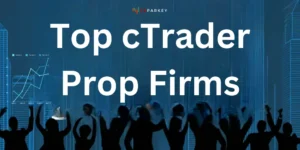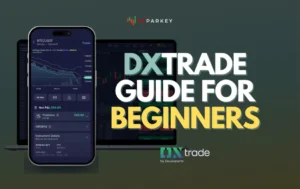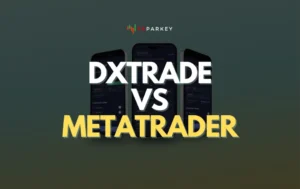Top futures trading platforms 2025 still look like they were coded by a caffeinated monkey with a grudge. Seriously, why does placing a simple trade feel like decoding the Matrix?
My buddy Jake tried futures trading last month. Poor bastard clicked “SELL” instead of “BUY” at market close, couldn't fix it until morning, and screamed so loud his neighbour called the cops. By open, he'd lost enough to fund a decent holiday.
I've been through the trenches for 15 years. Trust me, you need the right platform or you'll end up like Jake – broke and explaining yourself to the police.
Keep reading to know about the right platforms that won't make you want to throw your laptop out the window.
What makes a Futures Trading Platforms worth your time in 2025?

Here’s the no-nonsense checklist every trader actually cares about:
Stick to these and you’ll avoid most headaches.
Top Futures Trading Platforms Quick Comparison
| Platform | Key Characteristics | Best For |
|---|---|---|
| AvaTrade | MT5 & dedicated futures/options apps, copy trading focus | Beginners, Copy Traders, Options/Futures Specialists |
| Webull | Sleek modern interface, low fees (esp. micros), mobile-first | Tech-savvy Beginners, Mobile Traders, Day Traders |
| NinjaTrader | Advanced charting, highly customizable, algo trading support | Active Day Traders, Algo Traders, Experienced Traders |
| Plus500 | Simple, easy-to-use platform, broad CFD range | Casual Traders, Beginners wanting simplicity |
| Tastytrade | Options/futures focus, deep analytics, strong education | Active Options/Futures Traders, Analytical Traders |
1. AvaTrade
Alright, let's talk AvaTrade futures trading. Setting up an account felt a bit like going on a blind date – you're hopeful, but bracing for the worst. Surprisingly, it wasn't half bad! They've been around since 2006, are properly regulated in multiple places, and actually seem to care about customer support.
They throw a lot at you platform-wise: their own WebTrader, the popular MT4/MT5, a dedicated AvaOptions app for the options crowd, and even AvaFutures for exchange-traded futures on the CME.
Plus, they're big on copy trading with AvaSocial, ZuluTrade, and DupliTrade if you fancy letting someone else do the heavy lifting. Their educational stuff (AvaAcademy) is pretty solid too, and good if you're still finding your feet.
Who's it good for? Beginners who appreciate the learning resources, anyone keen on copy trading, and options or futures traders looking for specific platforms.
The Good Bits:
The Not-So-Good Bits:
Worth a look, especially if copy trading or specific platforms like AvaOptions/AvaFutures appeal. Just mind the inactivity fees and understand the risks involved, especially with CFDs.
2. Webull
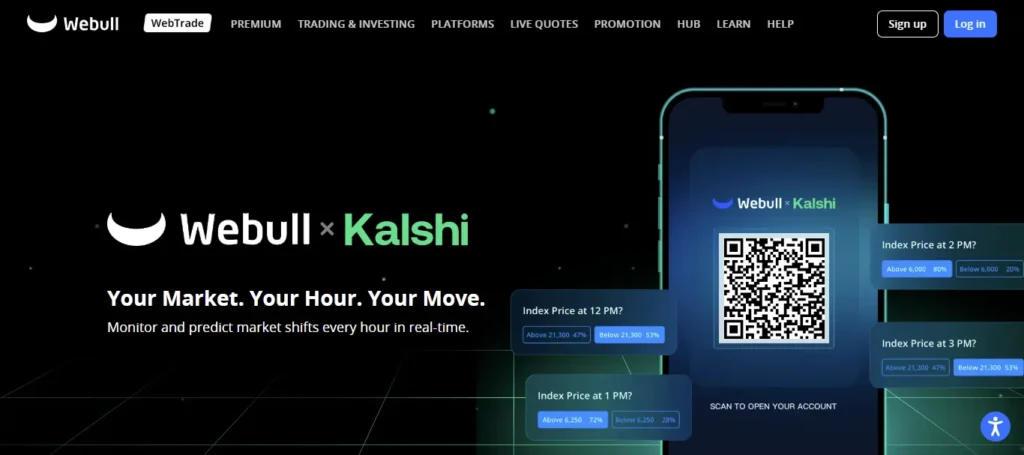
So my group chat has been buzzing about Webull futures trading 2025, and I finally caved. This thing feels like trading from the cockpit of a spaceship – sleek black interface, glowing charts, and buttons that actually make sense.
The app is as clean as a hound’s tooth. No cluttered menus or random popups trying to sell you stuff. Just your charts, your trades, and your data. It's built for beginners but packs enough punch that the pros in my circle haven't ditched it yet.
Since April 2024, they've added futures trading with stupid low fees – we're talking $0.25 per micro futures contract. That's pocket change compared to what I was paying before. You get access to 5 different futures markets right from your phone or desktop.
Who's it perfect for? Tech-savvy beginners who want to level up, intermediate traders sick of platforms that look like Excel 97, and anyone who trades on the go. Day traders particularly love the zero-commission options and cheap futures pricing.
The Good Bits:
The Not-So-Great Bits:
If you've outgrown those baby trading apps but aren't ready for platforms that need a PhD to operate, Webull hits that sweet spot. Just be ready to look elsewhere for serious research.
3. NinjaTrader
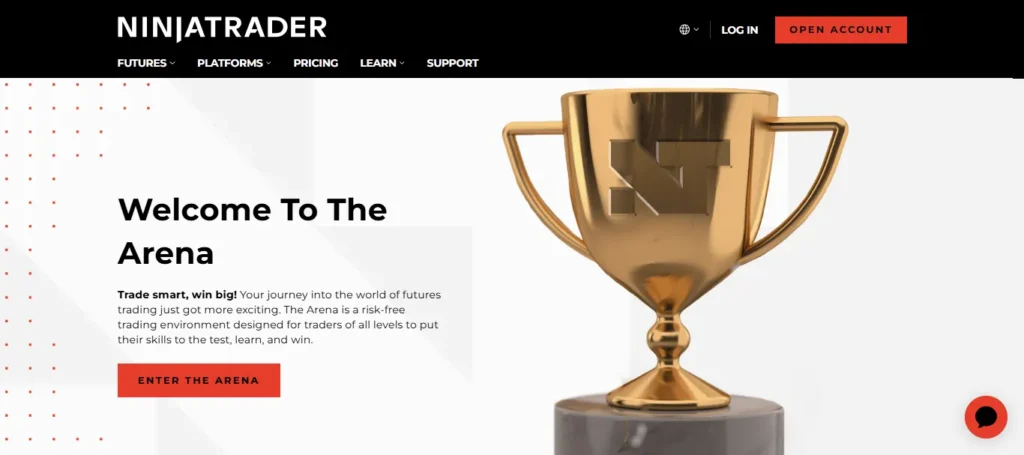
Now, let's talk about the NinjaTrader futures trading platform. Think of it less as a platform, and more like a stern sensei who only communicates through intricate candlestick formations and lightning-fast order execution. This isn't the place for casual button-mashing; it's a serious dojo for serious traders.
It packs some serious firepower:
Who's it good for? Discretionary traders, algo traders, and anyone who wants deep market visibility and control. If you dream in tick charts and love tinkering under the hood, this is your playground.
This is NOT for the faint-hearted or your nan. The learning curve can be steep if you're new to this level of analysis.
The Good Bits:
The Not-So-Good Bits
If you love tech, data, and dialing in your setup like a pro – this one's your dojo.
4. Plus500
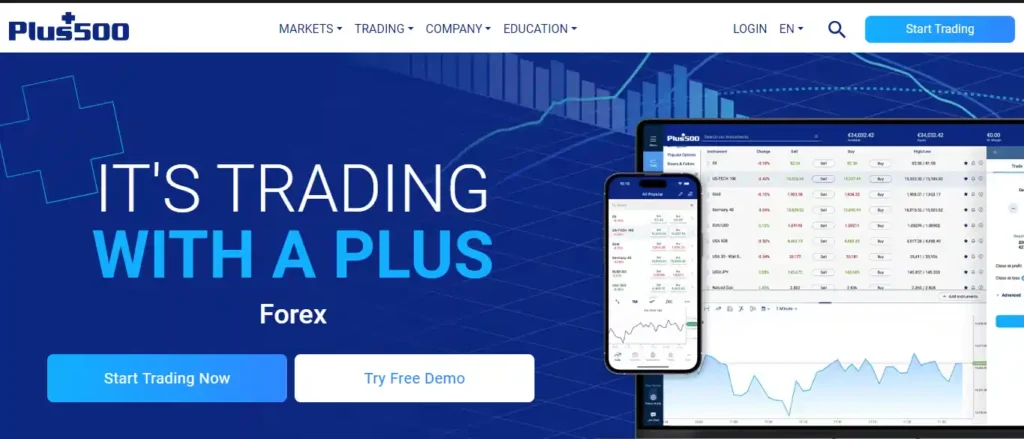
Picture this: you need a car to get from A to B. Nothing fancy, just something that starts every time and doesn’t cost a fortune to run. That’s Plus500 in the futures trading world. Simple enough your dog could probably place a trade… almost.
Plus500’s been around the block since 2008. It’s regulated, publicly traded, and doesn’t try to be something it’s not. The interface is straightforward. You won't find a million flashing lights and confusing gadgets.
It’s geared towards those who want to execute trades without needing advanced functionality. Plus, with a minimum deposit around $100, it won’t break the bank to get started.
Who's it good for? Casual traders looking for a no-nonsense experience, beginners who want a simple platform, and anyone who likes things that just work.
The Good Bits:
The Not-So-Good Bits:
If you want a fuss-free way to dip your toes into futures trading platform and a solid, reliable platform, Plus500 is worth a look. Just don’t expect it to win any beauty contests.
5. Tastytrade
Meet Tastytrade, the quirky cousin in the world of Tastytrade futures trading platform. If other platforms are buttoned-up suits, this one's rocking a hoodie covered in Greek symbols. It’s less a platform, and more a trading nerd’s sweet shop – data, charts, and probabilities packed into every corner.
Forget simplicity; this place is built by traders for traders, specifically those who live and breathe options and futures.
It’s fast, packed with analytical tools for dissecting trades, and has a pricing structure that high-volume options and futures traders will love ($1 per contract to open options, $0 to close, capped at $10 per leg; competitive futures rates). They also drown you in free educational content via their Tastylive network, which is genuinely useful.
Who's it good for? Active options traders, futures traders, and anyone who loves deep analytics and doesn't mind a learning curve. If you think probability of profit (POP) is a fun topic, you'll fit right in.
The Good Bits:
The Not-So-Good Bits:
If you're a serious options or futures fanatic who loves getting their hands dirty with data and strategy, Tastytrade is your kind of weird. Beginners might find it a bit much.
Common Queries About Futures Trading Platforms
What’s the Best Futures Trading Platform for Beginners?
Depends on what kinda beginner you are! If you're tech-savvy and want something clean, check out Webull. If you want loads of educational stuff built-in, Tastytrade is often recommended. Some platforms like NinjaTrader also offer great simulated trading to practice first.
Are these Futures Trading Platforms available in the UK?
Most big names operate internationally, but you gotta check their websites specifically. Look for regulation by the FCA (Financial Conduct Authority) – that's the big dog for UK safety. AvaTrade and Plus500, mentioned earlier, are regulated in the UK.
Do I Need a lot of money to Start Trading Futures?
Technically, some brokers let you open an account with $0, but you need money for margins. For micro futures, you might get away with starting around $2k-$5k, but $10k+ gives you more breathing room. Don't just scrape by with the absolute minimum; it's risky.
Can I Trade Futures on My Phone?
Yeah, absolutely! Most modern brokers have decent mobile trading apps these days. NinjaTrader recently revamped theirs, and Webull is known for being mobile-friendly. Just don't fat-finger a trade while you're on the bus!
What’s the Safest Futures Trading App?
There's no single “safest” one. Look for brokers regulated by top bodies like the CFTC/NFA in the US or the FCA in the UK. Good security (like 2-factor authentication) is crucial too. Stick with well-established, properly regulated brokers; they're generally your safest bet. NinjaTrader is highly rated, and others like AvaTrade and Plus500 have strong regulations.
Right, Let's Wrap This Up!

Trading futures? Pick the tool that won't stab you in the spreads or leave you crying into your coffee at 3 AM.
Looking at the latest data from May 2025, it's clear that choosing between these platforms boils down to your trading style. Some are built for tech nerds who love customization and advanced charting. Others work better for beginners who just want something that doesn't crash when markets get wild.
The research shows the best platforms nail the basics: fast execution, clean interfaces, solid mobile apps, and risk management tools that actually work. Many offer demo accounts so you can practice without blowing up your real money.
Don't get sucked in by flash – look for the substance behind those fancy charts. Remember, no amount of technical indicators will save you from a poor trading plan.
Get your homework done, pick a platform that fits your style, and start small.
Your future self (and bank account) will thank you when you're checking those Top Futures Trading Platforms 2025 reviews next year with actual profits to show for it!

